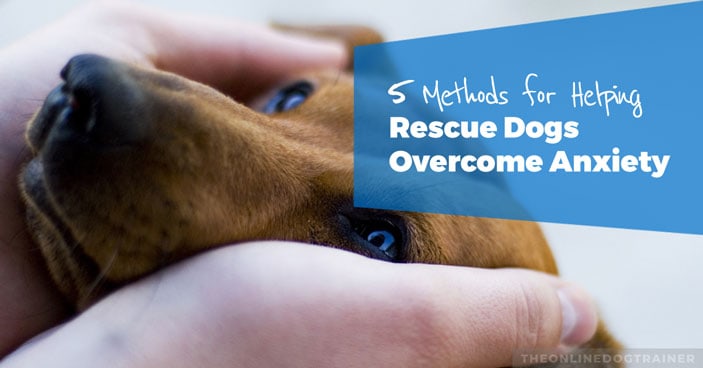
If you’ve ever dealt with anxiety in your own life, you know how unpleasant the experience is. Now think about what it must feel like for a rescue dog who doesn’t understand why they are feeling nervous, anxious, and fearful.
It’s devastating to watch a dog suffer with anxiety as they are unable to relax, may become destructive to your home or themselves (licking, paw chewing, etc.), and ultimately exhaust themselves as they are unable to turn off and chill.
If your rescue dog is exhibiting signs of anxiety, which may include…
- Pacing
- Chewing
- Whining/crying/barking
- Exhibiting destructive behaviors
- Aggression
- Shaking
- Etc.
…you’ve come to the right place.
Over the past few years I’ve put out a lot of helpful information for curbing anxiety, and today I’m going to share some of my favorite resources, tips, and training techniques that I know will help your dog calm down.
Before we jump into the solutions to solving anxiety, I think it’s important to look at a few different types of anxiety. Let’s get started…
3 Types of Anxiety that Rescue Dogs Might Experience
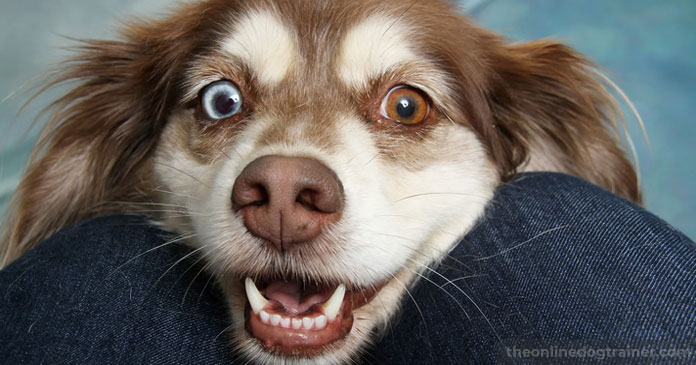
At the end of the day, anxiety is anxiety regardless of what causes it. However, it can be helpful to understand what is causing your dog’s anxiety before you attempt to fix it.
The most common type of anxiety is stress anxiety. This is a large umbrella category of anxiety in which any sort of stress situation may trigger your rescue dog to suffer from an anxiety attack.
For example:
If your dog had problems with being attacked by other dogs in the past, putting your pup in a situation (like going to the dog park) can cause a stress-related anxiety attack.
All dogs are unique in what stresses them out, so it’s important to pay attention to what’s going on as you witness your dog start to become anxious. Think about what in your environment has changed…what’s the trigger?
Second, your dog might be suffering from a phobia-based anxiety.
This type of anxiety is often associated with a handful of triggers. As long as these triggers aren’t present, your dog is fine.
For example:
The loud booming of fireworks would be considered a fear- or phobia-based trigger. Or perhaps your dog was abused by a male caregiver. It’s possible that your dog will gravitate toward females and get anxious when a male in your home approaches—regardless of how kind and gentle the men in your household are.
Third, many dogs suffer from separation anxiety.
This type of anxiety is unique as it’s typically triggered when your dog believes they are the boss of your household. Suddenly you leave the house and all of the responsibility is on your dog to manage things while you’re away while they are also worrying about whether you are safe and ok.
It may sound strange, but think of it this way…
Imagine you find yourself in charge of a large hospital ward, and you have zero training. Suddenly all of the staff leaves and you’re in charge of everything. You don’t know how anything works and have no training. Would you feel stressed? YES. It’s very stressful when you’re not cut out for this.
This is how separation anxiety tends to play out.
So, we’ve covered the 3 types of anxiety that your rescue dog might be suffering from. Now, what’s the solution?
The good news is that most of what I’m about to share will work for your dog, regardless of which of the above categories they fall into. Let’s dive into the solutions…
Anxiety Solution #1: Establish Yourself as the Household Provider
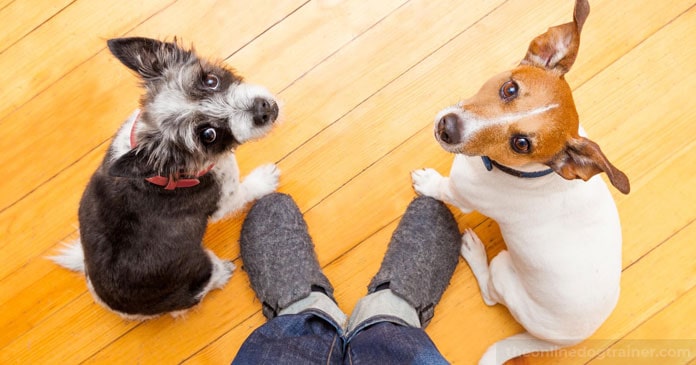
By far, the best thing you can do to eliminate your pup’s anxiety is to establish yourself as the provider in your home. Some may even refer to this as establishing yourself as the “pack leader.”
This is critical, as your dog needs to be able to look to you for guidance and reassurance to truly calm down and relax. When your dog is able to trust you for protection, nourishment, and companionship, there is no longer a need for him/her to be anxious.
How is this accomplished?
It all comes down to training and tapping into the psychology of your dog. You have to think like a dog to implement techniques that your pup will understand.
I’ve created a program called The Dog Calming Code which is specifically designed to help you train your dog in a kind, gentle manner. Within the program I provide you with many techniques that help you think like your dog and connect with your dog on a deeper level so that your pup will learn to look to you for guidance when it matters most.
I encourage you to learn more about how the program works here!
You MUST implement a solid training program that establishes you as the leader. This is non-negotiable. If you neglect this step, it’s unlikely that anything else I recommend will fix your problems long-term.
Anxiety Solution #2: Implement the Calm Freeze
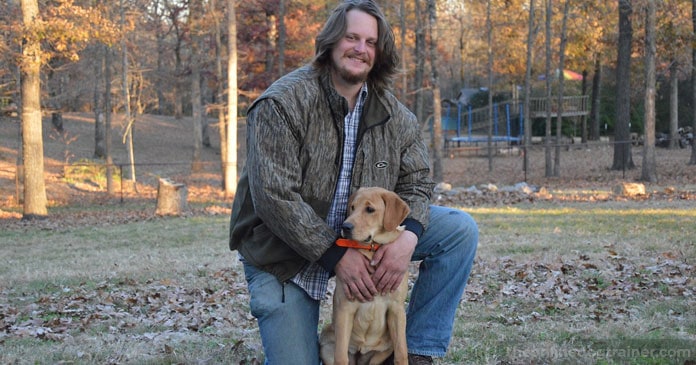
The calm freeze is a very simple but very powerful technique that I use in many situations for calming dogs down. The key is to show your dog that it’s ok to relax with your actions rather than your words.
Here are my step-by-step instructions that you can use to implement the calm freeze at home or when you’re out and about if you notice your dog is starting to become anxious.
- Take your dog under the collar using an underhand grip, so your palm should be facing upwards to the sky. Hold them as gently as possible. You may only need one finger. It is best if you can find a comfortable seat, as this process may take a while.
- Stay very calm. Focus on anything other than your dog. Think about a movie, a magazine, friends, or your next holiday.
- Ignore your dear lovely dog. No speaking to him, touching him or looking at him. This part is crucial. Eventually, your dog will sit, but keep hold of them gently under the collar.
- It’s now time for you to transfer your calm energy by BEING CALM. No words are necessary at this point. Eventually your dog will lie down, keep hold of him for a while until he is settled and relaxed. When he is really relaxed, you can let go of him.
- If your dog seems calm, let them go.
- Repeat the process as necessary.
The calm freeze is all about transferring your calm energy to your pup. Dog’s are incredibly aware…they pick up on energies, and if you’re stressed out and anxious your dog will be too!
Lead with a quiet, calm energy.
Anxiety Solution #3: Ensure Your Dog is Getting Enough Exercise
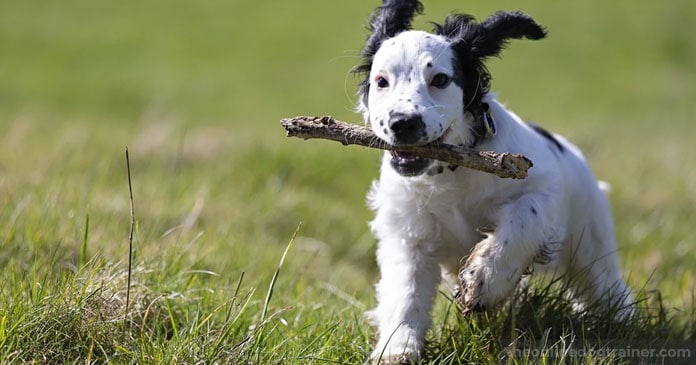
Anxiety is, ultimately, a type of energy.
When your dog has too much energy, the anxiety they experience is going to be worse. This is why daily exercise is so important.
Not only does exercise burn energy, but, just as with humans, it releases feel-good chemicals into your dog’s body. It’s amazing what a long walk in the park or a game of fetch can do to help your dog relax.
If you know your dog is going to be encountering a trigger that makes them anxious (like a trip to the vet or fireworks) take the time to give your pup a little extra exercise so there’s not so much energy built up in their body.
A run around the block isn’t a cure-all for anxiety, but it can certainly help!
Anxiety Solution #4: Set Your Dog Up for Success
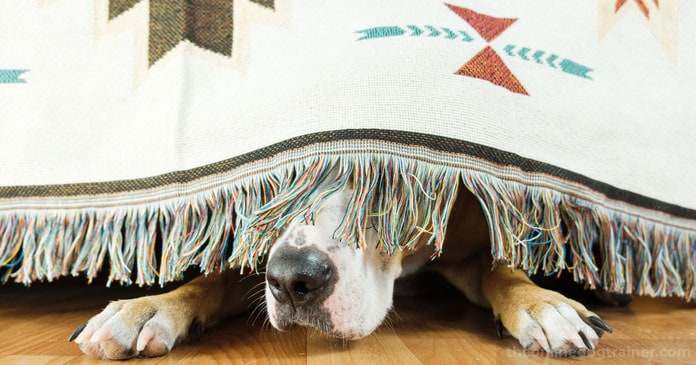
If you had a child who was terrified about riding roller coasters, you wouldn’t force your kid to get on a theme park’s biggest coaster that runs at top speeds with multiple loops and twists and turns.
No. You’d start small, perhaps on the tea cups, then maybe the swings, then onto a kiddie coaster until your kid realized that they are safe and are having fun and that the big rides aren’t scary.
The same philosophy must be applied to dogs. If you push too hard too fast you’re going to do more damage than good. You’ve got to take the time to set your dog up for success.
First, take some time to think about what’s triggering your dog’s anxiety. Second, set up a plan that you can use to ensure your dog feels as safe and secure as possible while a potential trigger is being set off.
For example:
Let’s say you have a dog that is afraid of fireworks. A holiday is coming up and you know people will be lighting fireworks in your neighborhood.
The best way to help your dog get through this time isn’t to take him out on the driveway and make him face his fears. No. The best thing you can do is to set your dog up with a safe space in your home where he feels protected. This might mean putting a crate in an isolated bedroom away from any windows to reduce the noise.
When your dog feels safe and the loud booms aren’t as prevalent, things don’t seem as scary. Over time, with training in place, your dog can learn to overcome his/her fears and will become more confident.
Think about how you can set your dog up for success in a way that comforts them when things become scary!
Anxiety Solution #5: Try CBD Calming Oil
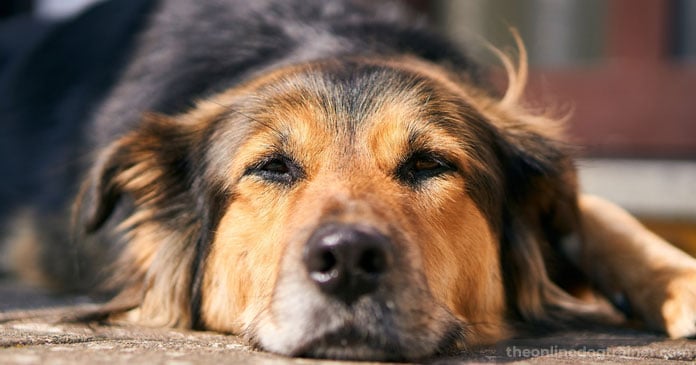
Just like humans, sometimes it’s beneficial for dog’s to take calming aids or medications when things are really rough.
I personally recommend a natural CBD oil product like my Angel Oil.
When it comes to dogs and CBD, it's all about how this magical cannabinoid teams up with their endocannabinoid system (ECS). Your dog's ECS is like the superhero responsible for mood, memory, muscle movement, digestion, appetite, and balance. When the ECS is in harmony, your dog shines in all these areas. But when it's off-kilter, their well-being can take a hit.
Since CBD is a great sidekick for the ECS, giving your pup a dose of doggy CBD treats or tinctures might help them find their balance and feel awesome overall.
Learn more about my Doggy Dan’s Angel Oil Products here!
Of course, it’s ALWAYS important to talk to a vet before you introduce any form of medication or calming aid into your dog’s diet. Make sure your vet gives you the green light to give it a try.
But don’t forget…
A CBD oil product is simply a training aid. It will NOT fix your dog’s anxiety issues in the long run. It’s simply a tool you can use to provide some temporary relief for your pup while you’re also implementing a solid training program—like The Dog Calming Code™.
Anxiety is an unpleasant and difficult issue. But, if you’re willing to take the time and make the effort to help your dog, it’s a problem that CAN be solved so you and your dog can live long, healthy, and stress-free lives!
I wish you the best as you work with your pup!
Cheers,

~Doggy Dan 🙂

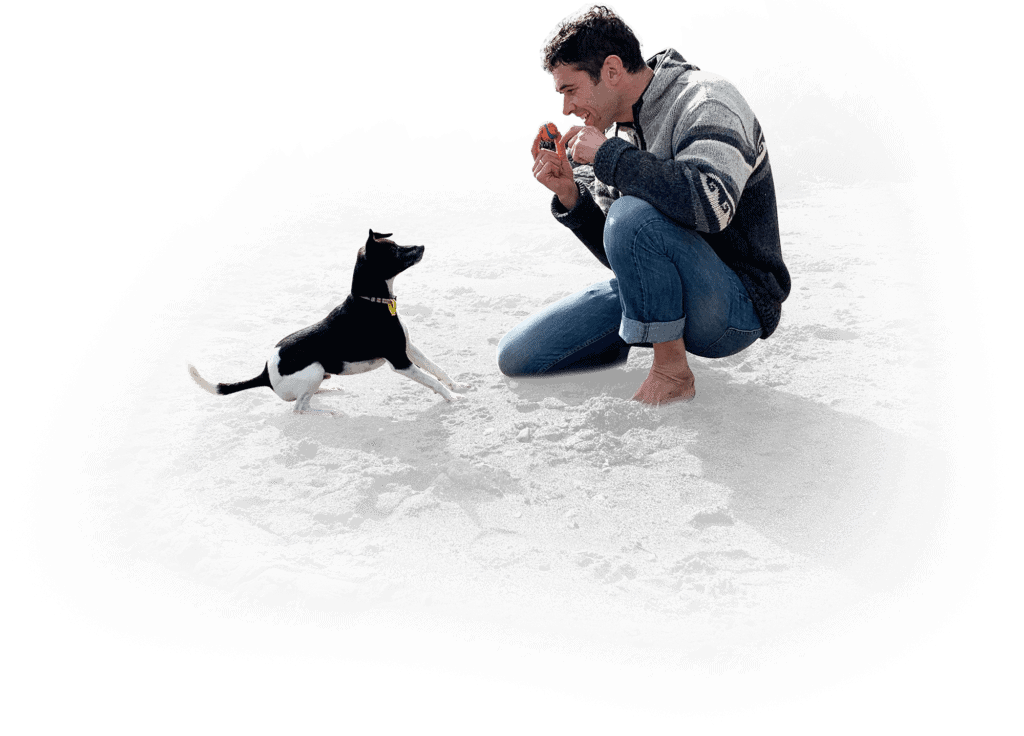
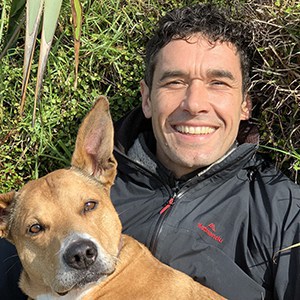

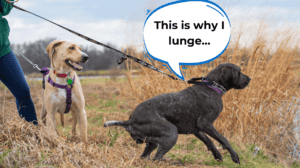
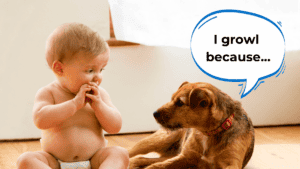
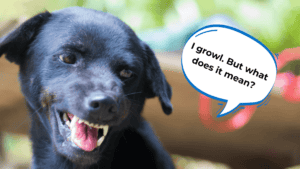
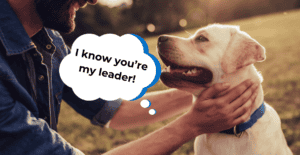
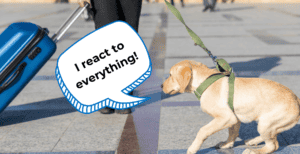
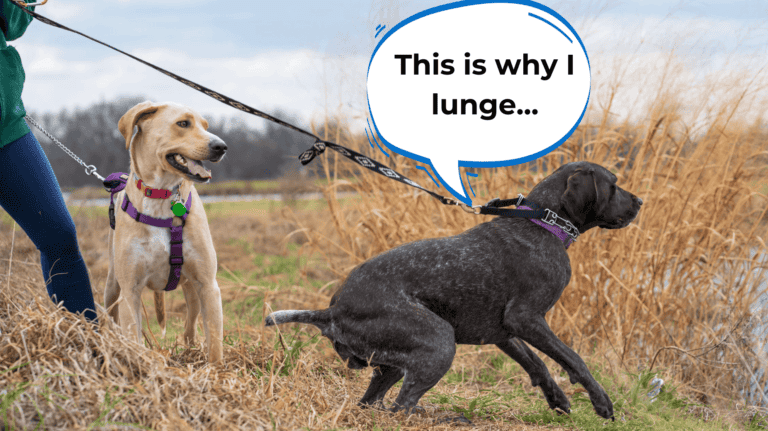
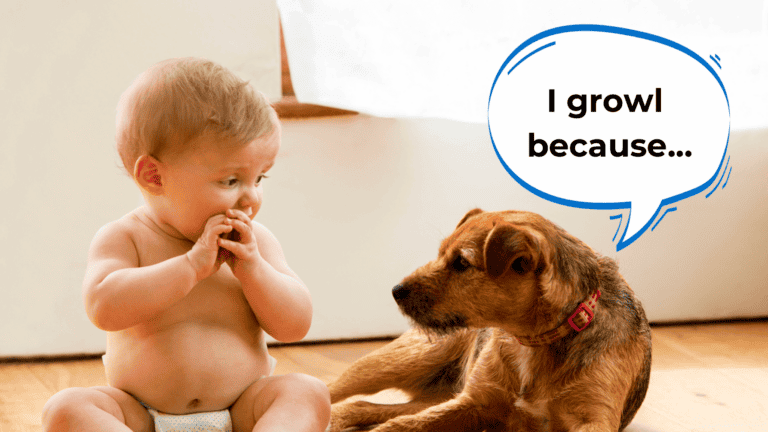
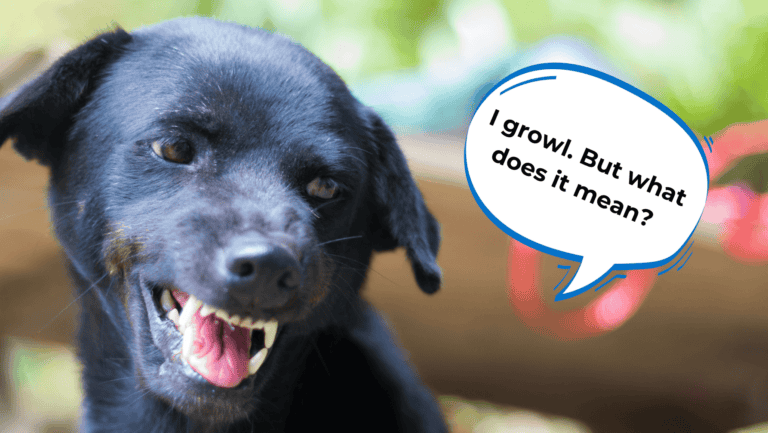

2 Responses
I like your suggested solutions, but I particularly like your explanations of why a dog may behave a particular way and then you offer an analogy. That is very helpful.
Is there a way to ask you a specific question about a specific dog’s behavior? I would be glad to pay for an answer. I have not been able to find a solution to my dog’s particular issue.
https://theonlinedogtrainer.com/shop/#comp-pack Unfortunately I cannot respond to every training question however, if you sign up for the Complete Pack, there’s a forum within the program, which is the best place to post these questions. Our very experienced trainer Hayley will then give you a detailed response. Theres also a lot more training content within. You can get in touch with the help desk to find out more. Cheers Dan